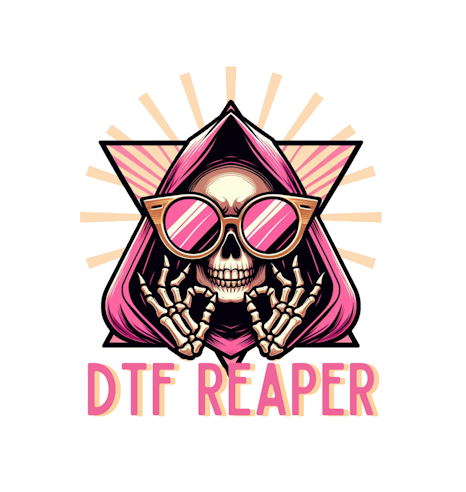
Understanding UV Direct-to-Film (DTF) Printing and its Significance for Small Businesses
Share
Small businesses seeking to expand their product offerings can benefit from the latest advancements in digital printing technology. One such innovation is UV Direct-to-Film (DTF) printing, a cost-effective and versatile method that has gained popularity among small business owners. This article aims to provide an overview of UV DTF printing, including its definition, working mechanism, components, the role of varnish, lamination process, applications, advantages for small businesses, and the resources available to learn more about this technology.
Definition and Working Mechanism
UV Direct-to-Film (DTF) printing is a digital textile printing process that involves transferring ink from a film (or base film) onto an object’s surface using UV curable inks. The main process can be summarized as follows:
- Preparation - Clean the desired object and apply a release agent to facilitate easy removal of the printed film.
- Printing - Using a specialized printer, print the design on a base film.
- Transferring - Place the printed film onto the prepared object, cover it with a backing film (or B film), and heat it under pressure to transfer the ink from the film onto the object’s surface.
- Curing - Expose the transferred ink to UV light for curing. This process hardens the ink, making it more resistant to wear and tear.
Components
UV DTF printing involves several components:
- Base Film (or film) - A transparent polymer film that holds the design to be transferred onto an object.
- Backing Film (or B film) - A thin, heat-resistant film used to apply pressure and transfer the ink from the base film onto the object’s surface.
- UV Ink - A special type of ink designed for curing under ultraviolet light. This ink is applied on the base film before the transfer process.
- Varnish - An optional clear coat applied over the printed design to provide a glossy finish, prevent color bleeding, and enhance adhesion.
- Object - The desired item to be decorated with UV DTF printing (e.g., clothing, promotional items, or home decor).
Varnish and Lamination Process
Varnish is an optional component in UV DTF printing, but it is crucial for creating a more durable and visually appealing printed product. Varnish provides the following benefits:
- Glossy Finish - Enhances color presentation and makes prints appear less dull or washed out.
- Protection - Prevents potential color bleeding, keeps edges defined, and provides stronger adhesion to the object.
- Sheltering - Protects against scratching and water damage, ensuring longer product lifespan.
The lamination process involves applying a layer of polymer film over the printed design and varnish (if used) to further protect it from wear and tear. This is especially important for items that will be subjected to frequent use or harsh environmental conditions.
Applications and Advantages for Small Businesses
UV DTF printing offers numerous advantages for small businesses:
- Versatility - Suitable for most rigid regular or irregular object surfaces.
- High-quality results - Produces vibrant, long-lasting prints with a glossy finish.
- Cost-effectiveness - Allows for quick, efficient production and lower material costs compared to traditional screen printing methods.
- Customization - Enables small businesses to create unique, personalized products that set them apart from competitors.
For more information on UV DTF printing, consider the following resources. To get started today, please visit our UV DTF section for further information.
Resources
Chen, C., Chen, M., Li, L., & Chang, P. (2019). Comparison of direct-to-film (DTF) and sublimation printing technology for textile applications. Journal of Textile Science and Technology, 3(4), 69–75.
Lu, Y., Chen, C., Li, L., & Chang, P. (2015). Investigation on the characteristics and application of direct-to-film (DTF) printing technology for textile applications. Journal of Textile Science and Technology, 1(2), 4–10.
Procolored UV DTF Printer [Blog post]. (n.d.). Retrieved from https://www.procolored.com/blogs/news/here-is-what-you-may-want-to-know-about-procolored-uv-dtf-printer
Direct-to-Film Printing [Website]. (n.d.). Retrieved from https://www.directtofilmprinting.com/
